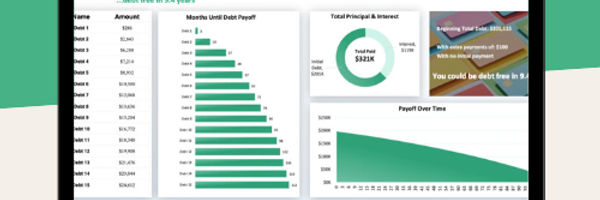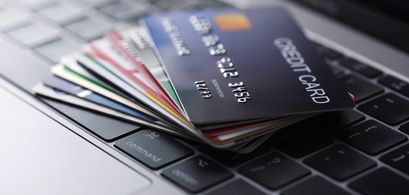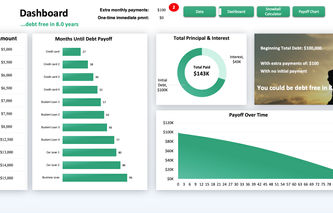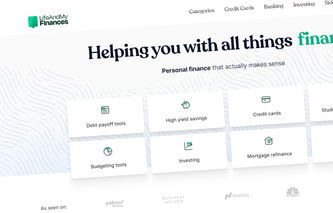While nothing in life is guaranteed, there are plenty of cards with impressive approval odds. And not only that—they give you lots of spending power with limits of $1,000 or more.
It’s time to say goodbye to rejection and hop aboard the credit-building express with your shiny new card—
This article will show you:
The best secured and unsecured cards with guaranteed approval.
How to apply for a credit card with poor credit.
The ins and outs of boosting your credit score.
Read more:
Do Guaranteed Approval Credit Cards Exist?
Before we give you the full lowdown, let’s be clear—nothing is 100% guaranteed. Not the cash in your birthday card, the puppy your partner promised, or approval from your chosen credit card.
But there are ways you can boost your chances.
Many “guaranteed approval” cards get this title by being more lenient with their eligibility requirements.
These easy-to-get credit cards typically look at factors beyond your credit score, like your income and financial background. Some just want a security deposit as collateral in case you can’t make payments.
And because these cards cater to the bad credit bunch, you can’t expect top rates or fancy rewards.
But what you do get is the chance to increase your credit score, and then graduate to a card that offers more perks and better rates.
To point you in the right direction, here’s our complete list of “guaranteed approval” credit cards with $1,000 limits for bad credit—
Unsecured Credit Cards for Bad Credit With No Deposit
Let’s start with our batch of guaranteed approval unsecured credit cards.
These cards don’t require a security deposit, and most of them will overlook your credit score.
But is it really that simple?
Not exactly. While these cards offer easy approval, they still look at other factors in your application. This could include your income, banking details, and credit history.
Here’s a round-up of the best unsecured cards for bad credit:
Top Pick: Petal 2 Visa Credit Card
Rates
TYPE | DESCRIPTION |
|---|---|
Regular APR | 17.99%–31.99% |
Intro APR | N/A |
Balance transfer rate | N/A |
Balance transfer intro APR | N/A |
Cash advance APR | N/A |
Fees
FEES | AMOUNT |
|---|---|
Annual fees | $0 |
Balance transfer fees | N/A |
Cash advance fees | N/A |
Foreign transaction fees | $0 |
Late payment fees | $0 |
Rewards are a rare sight among unsecured “bad credit credit cards”. But Petal 2 offers 1% cashback from the start, and with twelve on-time monthly payments, it increases to 1.5%.
You can also enjoy added cashback opportunities from 2% to 10% at select merchants.
The stand-out feature of the Petal 2 Visa Card is its maximum credit limit of $10,000. You’ll have to work for it, though, as they check various factors (such as your ability to pay, previous credit limits, and credit history).
And even if you lack a credit history, Petal also considers factors like income and savings in your application. Just a heads up for those with a damaged credit history, as you might have a trickier time getting the seal of approval.
Pros
- No hidden fees.
- Generous rewards program.
- High $10,000 credit limit.
Cons
- Potentially high APR.
- Permanent minimum payment due date.
- Those with a damaged credit history may not be accepted.
Rates
TYPE | DESCRIPTION |
|---|---|
Regular APR | 22.74%–36.00% |
Intro APR | N/A |
Balance transfer rate | 25.74%–36.00% |
Balance transfer intro APR | N/A |
Cash advance APR | 25.74%–36.00% |
Fees
FEES | AMOUNT |
|---|---|
Annual fees | $49 to $175 (after that $0 to $49 annually) |
Balance transfer fees | 3% of the amount after the first year |
Cash advance fees | Either $5 or 5% of the amount of each cash advance (whichever is greater) |
Foreign transaction fees | 3% of each transaction amount in US dollars |
Late payment fees | Up to $40 |
Fortiva Mastercard is a credit-building option that doesn’t require a security deposit. And while it lacks welcome bonuses or rewards points, applying for this card brings near-instant credit decisions.
Fortiva reports all credit activity to Equifax, Experian, and TransUnion. Through their partnership with Experian, they provide free access to your VantageScore 3.0.
The issuer also periodically reviews your account for potential credit limit increases, which can go up to $1,000.
Just watch out for the annual fee, which ranges from $49 to $175 in the first year (then from $49 to no annual fee in the years following). There’s also an account maintenance fee starting at $60, which can go up to $159 (billed monthly at $5 or $12.50 per cycle).
Pros
- Free credit score.
- Credit-building opportunities.
- Contactless payments.
Cons
- No rewards program.
- High maximum APR.
- Steep maintenance fees.
Rates
TYPE | DESCRIPTION |
|---|---|
Regular APR | 28.99% |
Intro APR | N/A |
Balance transfer rate | N/A |
Balance transfer intro APR | N/A |
Cash advance APR | 28.99% |
Fees
FEES | AMOUNT |
|---|---|
Annual fees | $75 first year, then $99 annually (billed at $8.25 per month) |
Balance transfer fees | N/A |
Cash advance fees | $5 or 8% of each cash advance (whichever is greater) |
Foreign transaction fees | $1 or 3% of each purchase in US dollars (whichever is greater) |
Late payment fees | Up to $39 |
The Credit One Platinum Visa is a credit-building card with a starting limit of $300. You can increase this to a maximum of $1,500 through responsible credit management.
The Credit One Bank Visa offers a customizable cashback rewards program where you can earn 1% cashback on eligible purchases.
Even better, you can choose from six reward programs: cashback for gas, groceries, phone services, dining, auto purchases, and more.
But the Credit One Platinum Visa comes with a high annual fee. In the first year, you’ll be charged $75, followed by $99 per year ($8.25 per month) in subsequent years. For cash advances, there’s a fee of $5 or 8% of each transaction (whichever is greater) and a 3% foreign transaction fee.
Pros
- Visa perks.
- Cashback rewards.
- Credit Protection Program.
Cons
- High APR.
- Annual fees.
- Foreign transaction charges.
Avant Credit Card
Rates
TYPE | DESCRIPTION |
|---|---|
Regular APR | 29.99%–34.99% |
Intro APR | N/A |
Balance transfer rate | N/A |
Balance transfer intro APR | N/A |
Cash advance APR | 29.99%–34.99% |
Fees
FEES | AMOUNT |
|---|---|
Annual fees | $0–$59 |
Balance transfer fees | N/A |
Cash advance fees | $10 or 3% of each cash advance (whichever is greater) |
Foreign transaction fees | $0 |
Late payment fees | Up to $39 |
The Avant credit card helps you control your spending and enhance your credit score. When applying, they consider factors beyond your credit—so a less-than-ideal score won’t hold you back.
Once you’ve got the card, you’ll geta credit limit of $300 to $3,000based on your financial records.
And if you get stuck with a low limit, you can prove yourself for a higher one by making on-time payments and keeping a low credit utilization.
Avant also positively impacts your credit score by reporting to all three bureaus. But don’t overlook the fees, which include the steep 29.99%–34.99% APR, along with annual and late fees.
Pros
- Easy approval process.
- Pre-qualification option.
- No foreign fees.
Cons
- High APR fee.
- No rewards.
- High cash advance APR.
Reflex Platinum Mastercard
Rates
TYPE | DESCRIPTION |
|---|---|
Regular APR | 29.99% |
Intro APR | N/A |
Balance transfer rate | N/A |
Balance transfer intro APR | N/A |
Cash advance APR | 29.99% |
Fees
FEES | AMOUNT |
|---|---|
Annual fees | $125 for the first year, after that $96 annually |
Balance transfer fees | N/A |
Cash advance fees | Either $5.00 or 5% of each cash advance (whichever is greater) |
Foreign transaction fees | 3% of each transaction in US dollars |
Late payment fees | Up to $38 |
The starting credit limit for the Reflex Platinum Mastercard ranges from $300 to $1,000. You can boost that to $2,000 with savvy credit habits, timely payments, and a credit utilization below 30%.
But this comes at a cost. Expect an annual fee of $96, a $10 monthly maintenance fee after the first year, and foreign transaction fees. (Sadly, no rewards or cashback incentives are offered.)
Despite drawbacks, the Reflex Platinum Mastercard is still a handy tool for building credit. Just make sure you factor in the fees and interest rates before boosting your score and opening doors to better financial opportunities.
Pros
- Free monthly credit score.
- Chance to double your credit limit.
- Reports to all three credit bureaus.
Cons
- High interest rates.
- Steep annual fee.
- Need a checking account for approval.
Surge Platinum Mastercard
Rates
TYPE | DESCRIPTION |
|---|---|
Regular APR | 29.99% |
Intro APR | N/A |
Balance transfer rate | N/A |
Balance transfer intro APR | N/A |
Cash advance APR | 29.99% |
Fees
FEES | AMOUNT |
|---|---|
Annual fees | $125.00 for the first year (after that $96.00 annually) |
Balance transfer fees | N/A |
Cash advance fees | Either $5.00 or 5% of each cash advance (whichever is greater) |
Foreign transaction fees | 3% of each transaction in US dollars |
Late payment fees | Up to $38 |
The Surge Platinum Mastercard offers an initial credit limit ranging from $300 to $1,000, giving you enough spending power while building your credit.
But it doesn’t stop there—Surge Card will give you the chance to double your initial limit. All you need to do is make the first six monthly minimum payments on time, and your credit limit will get a nice boost.
However, the Surge Mastercard is like a high-maintenance friend: expensive and potentially unsustainable. Expect an annual fee of up to $125 and monthly maintenance fees of up to $10—totaling up to $245 a year.
Pros
- Chance to double your credit limit.
- Reports to all three credit bureaus.
- Free monthly credit score.
Cons
- High annual fee.
- Maintenance charges.
- Foreign transaction and late fees.
Secured Credit Cards for Bad Credit
Secured cards are typically what springs to mind when thinking about credit cards for low credit. This is because they don’t focus as much on your credit score in your application.
Instead, they ask for a refundable security deposit as collateral in case you fail to make payments.
This deposit also acts as your credit line, which you can usually increase if you add to your deposit.
Here’s the scoop on all the secured credit cards with a $1,000 credit limit:
Top Pick: First Progress Platinum Prestige Secured Credit Card
Rates
TYPE | DESCRIPTION |
|---|---|
Regular APR | 14.99% |
Intro APR | N/A |
Balance transfer rate | N/A |
Balance transfer intro APR | N/A |
Cash advance APR | 23.99% |
Fees
FEES | AMOUNT |
|---|---|
Annual fees | $49 |
Balance transfer fees | N/A |
Cash advance fees | Either $10.00 or 3% of each cash advance (whichever is greater) |
Foreign transaction fees | 3% of the transaction amount |
Late payment fees | Up to $41.00 |
The First Progress Platinum Prestige Mastercard Secured Credit Card is a great choice if you’re aiming to build or rebuild your credit. With no minimum credit score requirement, it’s designed to help those with no credit history or on a credit comeback journey.
The initial security deposit determines your credit limit, ranging from $200 to $2,000. If possible, aim for the higher end of this spectrum, as it’ll be easier to keep your credit utilization rate low. With a lower limit, it’s challenging to stay within the 30% guideline.
After gaining issuer approval, you can request a higher credit limit of up to $5,000 by increasing your security deposit.
Pros
- Low APR.
- Cashback rewards.
- Reports to all major credit bureaus.
Cons
- Foreign transaction charges.
- Late penalty fees.
Rates
TYPE | DESCRIPTION |
|---|---|
Regular APR | 25.99% |
Intro APR | N/A |
Balance transfer rate | 25.99% |
Balance transfer intro APR | N/A |
Cash advance APR | 28.99%–29.99% |
Fees
FEES | AMOUNT |
|---|---|
Annual fees | $0 |
Balance transfer fees | 3% of the amount of each transaction |
Cash advance fees | 3% of the amount of each transaction |
Foreign transaction fees | 3% of the US dollar amount |
Late payment fees | Up to $40 |
The Bank Americard Secured Credit Card is a powerful ally in your credit journey. It reports your payment behavior to all three credit bureaus, flexing your credit muscles and strengthening your score.
Bank of America also reviews your credit activity and rewards responsible behavior with deposit returns.
Another big bonus is the maximum credit limit of $5,000, which you can reach with good credit habits.
Unlike other cards, the card also has no annual fees or hidden charges—providing a clear path to credit improvement. Just watch out for the high APR of 25.99%.
Pros
- No annual fee.
- Mobile banking.
- Chance to become unsecured after twelve months.
Cons
- High regular APR.
- No rewards or cashback.
Applied Bank Secured Visa Gold Preferred Credit Card
Rates
TYPE | DESCRIPTION |
|---|---|
Regular APR | 9.99% |
Intro APR | N/A |
Balance transfer rate | N/A |
Balance transfer intro APR | N/A |
Cash advance APR | 9.99% |
Fees
FEES | AMOUNT |
|---|---|
Annual fees | $48 |
Balance transfer fees | N/A |
Cash advance fees | $5 or 5% of each cash advance (whichever is greater) |
Foreign transaction fees | 3% of each transaction in US dollars |
Late payment fees | Up to $38 |
If the goal is to build or rebuild your credit, consider the Applied Bank Secured Visa Gold Preferred Credit Card.
To activate it, deposit $200 to $1,000—which will become your starting credit limit. You’ll then get the opportunity to increase it by making additional deposits of up to $5,000.
Just be aware that there’s no grace period, so interest begins accruing immediately.
Fees associated with the card include an annual fee of $48, late and returned payment fees of up to $38, and various other charges. So keep these in mind when figuring out the card’s cost.
Pros
- Instant approval.
- Low fixed APR.
- High maximum credit limit.
Cons
- No grace period.
- Late payment fee.
- Foreign transaction charges.
Rates
TYPE | DESCRIPTION |
|---|---|
Regular APR | 27.99% |
Intro APR | N/A |
Balance transfer rate | 27.99% |
Balance transfer intro APR | 10.99% |
Cash advance APR | 29.99% |
Fees
FEES | AMOUNT |
|---|---|
Annual fees | $0 |
Balance transfer fees | Intro fee of 3% of each transfer (after that, 5% of the amount of each transfer) |
Cash advance fees | $10 or 5% of each cash advance (whichever is greater) |
Foreign transaction fees | $0 |
Late payment fees | $0 for the first late payment (then up to $41) |
The Discover it Secured Credit Card isn’t just about building credit—you can also earn rewards on your purchases.
The annual fee is a delightful $0, with no hidden fees to hinder your progress.
The credit limit on the Discover it Secured card is determined by the security deposit you provide. Let’s say you’re approved for a credit limit of $300. To unlock your borrowing potential up to that limit, you must provide a corresponding $300 security deposit.
If you want an increase (up to $2,500), avoid maxing out your credit limit each month, and keep your credit utilization low.
Pros
- Solid cashback rewards.
- Pre-approval process.
- Reports to all three credit bureaus.
Cons
- High APR.
- Requires a bank account.
Merrick Bank Double Your Line Secured Credit Card
Rates
TYPE | DESCRIPTION |
|---|---|
Regular APR | 22.45% |
Intro APR | N/A |
Balance transfer rate | N/A |
Balance transfer intro APR | N/A |
Cash advance APR | 27.45% |
Fees
FEES | AMOUNT |
|---|---|
Annual fees | $36 the first year ($3 dollars per month after that) |
Balance transfer fees | N/A |
Cash advance fees | $10 or 4% of the amount advanced (whichever is greater) |
Foreign transaction fees | 2% of each transaction in US dollars |
Late payment fees | Up to $40 |
As the name suggests, the Merrick Bank Double Your Line Mastercard can help you unlock greater purchasing power by doubling your credit line.
To start, provide a $200 security deposit as collateral, which will become your initial credit limit. Making payments on time for seven months doubles your credit line to $400.
And if you want a further increase, you can add more money to your security deposit—up to $3,000. (Just know that Merrick Bank only doubles the original $200 amount.)
The card carries a $36 annual fee, late penalties, foreign transaction fees, and return payment charges—but the 22.45% APR is lower than the average credit card APR, offering a more favorable interest rate.
Pros
- Credit line increase potential.
- Opportunity to build credit.
- Free monthly FICO report.
Cons
- Annual fee.
- Low starting credit limit.
- No rewards.
Capital One Platinum Secured Credit Card
Rates
TYPE | DESCRIPTION |
|---|---|
Regular APR | 30.49% |
Intro APR | N/A |
Balance transfer rate | N/A |
Balance transfer intro APR | N/A |
Cash advance APR | 30.49% |
Fees
FEES | AMOUNT |
|---|---|
Annual fees | $0 |
Balance transfer fees | N/A |
Cash advance fees | Either $3 or 3% of each cash advance (whichever is greater) |
Foreign transaction fees | $0 |
Late payment fees | Up to $40 |
The Capital One Platinum Secured Card is designed to help you establish a positive credit history. The card welcomes low credit with open arms, accepting those with a credit score range of 500 to 600 FICO.
The Capital One Platinum Secured Card comes with no annual fee, meaning no hidden charges eating away at your progress. While it may not offer any rewards or introductory offers, the absence of an annual fee allows you to focus solely on building your credit history.
And if you consistently make your payments on time, you may become eligible for a credit line increase after just six months—with the highest limit being $1,000. Keep in mind that your initial credit limit will depend on your creditworthiness and financial situation.
Pros
- No annual fee.
- No foreign transaction fee.
- Credit limit increase after six on-time payments.
Cons
- High interest rate.
- No cashback or rewards program.
See how Capital One Platinum compares to Capital One Quicksilver.
Can I Get a Credit Card With Bad Credit With a $1,000 Limit?
Yes, you can get a credit card with bad credit and a $1,000 limit.
Many financial institutions offer easy-approval credit cards specifically designed for those looking to build their credit.
Some of our top picks include:
Petal 2 Visa Credit Card
Fortiva Mastercard Credit Card
Bank Americard Secured Credit Card
First Progress Platinum Prestige Secured Credit Card
There are plenty of perks to having a credit card with a $1,000 limit. It gives you the chance to show responsible credit behavior by making timely payments and keeping your credit utilization low.
For example, if you have a $1,000 limit and consistently use no more than 30% of it ($300), you show lenders that you can manage credit responsibly. This can lead to future credit limit increases and improved credit scores.
Remember
Use your credit card wisely. Pay your bills on time, keep your balances low, and avoid maxing out your credit limit. By doing so, you’ll gradually rebuild your credit and open doors to better financial opportunities.
And don’t get discouraged by your bad credit. By practicing patience and taking steps to rebuild it, you can pave the way to a brighter financial future.
How do I apply for a credit card with bad credit?
Applying for a credit card with bad credit is totally doable.
Let’s break it down—
Assess your credit: Begin by checking your credit report and score. This will give you a clear understanding of where you stand.
Research credit cards: Look for credit cards for those with bad credit. These cards often have higher interest rates or fees, but they give you a chance to prove your creditworthiness.
Compare terms: Pay attention to fees, APRs, credit limits, and any additional perks. Consider cards that report your payment history to credit bureaus, as this will help boost your credit over time.
Gather documentation: Prepare necessary documents like identification, proof of income, and your address. Having these ready will streamline the application process and ensure accuracy.
Apply online: Visit the issuer’s website and complete the online application. Be honest and accurate in filling out the required information.
Make a security deposit (if needed): Some credit cards for bad credit require a security deposit. This acts as collateral and can determine your credit limit. (For example, the Discover it Secured Card allows you to make a deposit as low as $200, and your credit limit matches that amount.)
Play the waiting game: After submitting your application, give it some time for processing. The issuer will evaluate your application based on various factors, including your credit history and income. In many cases, this won’t take longer than a few minutes.
Remember
Getting approved for a credit card with bad credit is just the beginning. Your goal is to use it responsibly to rebuild your credit. Make small purchases, pay your bills on time and in full, and keep your credit utilization low.

Lay out your credit card debt with the minimum payments and interest to see how long it will take to pay off!
What you will get:
Interactive dashboard
Customizable to your needs
Stay on track with charts and graphs
Suitable for up to 16 or 32 debts!

What credit score do I need to get a credit card?
Different credit cards ask for varying credit scores. It’s best to take a look at the card’s website or contact their team so you’re clear on what they’re asking for.
Here’s a general idea of you what you can expect—
Good to excellent credit score: Top-tier credit card issuers prefer applicants with good credit scores, which typically fall in the range of 670 to 850 (according to FICO). With a higher credit score, you have a better chance of being approved for cards with lower interest rates and more perks.
Fair or average credit scores: Many credit cards cater to individuals with fair or average credit scores, usually ranging from 580 to 669. These cards are designed to help you improve your credit while offering some benefits along the way.
Secured credit cards: If your credit score is on the lower side or you’re building credit from scratch, secured credit cards can be a great starting point. These cards require a security deposit as collateral. By using and paying off a secured card responsibly, you can gradually build your credit and work up to credit cards with no deposit.
Specialized cards: Some credit card issuers offer specific cards for people with limited or no credit history. These cards focus more on your financial information, such as income and employment, rather than solely relying on your credit score.
Remember
Credit scores are just one piece of the puzzle. Issuers consider various factors like income, debt-to-income ratio, and credit history when evaluating your application. So, even if your credit score isn’t perfect, you still have a good shot.
Before applying for a credit card, it’s wise to check your credit score and review your credit report for accuracy. This way, you’ll have a clearer picture of where you stand and can make more informed decisions.
Read more:
What’s the Easiest Credit Card to Get With Bad Credit?
Cards like the Petal 2 Visa and First Progress Platinum Prestige are pretty easy to get your hands on as they don’t do credit checks—they look at other factors, such as your income and financial background instead.
Here’s an overview of the easiest cards to apply for—
Secured credit cards
When it comes to bad credit, secured credit cards are often the go-to option. These cards require a security deposit that serves as collateral, providing assurance to the issuer.
One example is the Discover it Secured Card, which allows you to secure a credit line with a deposit as low as $200, making it an accessible choice.
Store credit cards
Another avenue to explore are store credit cards. Retailers like eBay, Amazon, and Best Buy offer credit cards for loyal shoppers.
They may be more lenient with credit requirements, especially if you frequently shop at their stores. Just be cautious of high-interest rates and avoid overspending for the sake of building credit.
And keep in mind that store cards can limit the places where you can spend.
It’s important to look out for is the flexibility and acceptance of a credit card. The last thing you need is a credit card that is only accepted in a handful of stores. This will massively limit your ability to show and buy what you want.Young Pham, Financial advisor at BizReport
Check out more merchandise cards:
Credit builder loans
While not exactly a credit card, credit builder loans are also worth considering, as they can help you build credit by making small payments over time. They’re often available through credit unions or online lenders.
Just make sure you can pay off the loan—or you’ll land yourself in debt.
Remember
Building credit takes time and patience. But with persistence and responsible credit behavior, you’ll gradually improve your credit score and unlock better credit card options with more favorable terms.
Discover more “poor credit credit cards:”
Can I Get a Rewards Credit Card With Poor Credit?
Finding rewards credit cards for those with poor credit is tricky business. The aim of most “bad credit credit cards” is to help you build credit, not give you a pat on the back.
But while it’s challenging to find cards with those elusive rewards for bad credit—it’s not impossible.
For example, the Petal 2 Card not only helps you establish credit, it also provides cashback rewards based on your spending habits.
The Credit One Bank Platinum Visa and Discover it Secured Credit Card are also worth checking out if you’re on the hunt for rewards.
While the rewards may not be as stellar as those on premium cards, they still offer an extra incentive for your spending endeavors while helping you improve your credit.
Remember
Building credit should be your main focus. By responsibly managing your credit and improving your score, you’ll widen the range of credit card options, including those with more enticing rewards.
For more rewards, learn how to qualify for these top cashback cards.
How Can I Build Credit Using a Credit Card For Poor Credit?
The art of building credit with poor credit isn’t as tricky as you think.
Here are some tips on how to build credit with bad credit—
Start with a secured credit card
Find a secured credit card for those with poor credit. With a secured card, you’ll need to provide a security deposit as collateral, which usually ranges from $100–$500.
Once you’ve got the card, you can make small purchases and pay them off promptly each month to show off your responsible credit usage.
Make timely payments
Make sure you get those credit card bills paid on time. Your payment history accounts for 35% of your overall credit score, so late payments can cause it to take an almighty hit.
Don’t skip a beat and set up reminders or automatic payments to stay on top of your bills.

Lay out your credit card debt with the minimum payments and interest to see how long it will take to pay off!
What you will get:
Interactive dashboard
Customizable to your needs
Stay on track with charts and graphs
Suitable for up to 16 or 32 debts!

Keep utilization in check
The utilization rate is the percentage of your available credit that you use. Aim to keep it below 30% to show lenders that you’re not overly reliant on credit.
For example: If your credit limit is $500, try to keep your balance below $150.
Monitor your credit
Keep an eye on your credit report to make sure it’s all accurate and free from any suspicious activity.
You can access a free credit report from each of the three major credit bureaus once a year at AnnualCreditReport.com or get free monitoring from Credit Karma.
Be patient
Building credit takes time, so patience is key. Stay committed to responsible credit practices, and over time, you’ll see improvements in your credit score.
By using a credit card for poor credit wisely and responsibly, you’ll gradually boost your score.
Read more:
How Can I Get a Higher Credit Limit On My Credit Card?
Many issuers offer credit limit increase with their card. But they won’t just serve it on a platter—you have to work for it.
Here are some practical tips to help you achieve your credit limit goal:
Prove yourself: If there’s ever a time to show off, it’s here and now. Make punctual payments, keep your credit utilization low, and stay out of debt. This shows lenders that you can be counted on and increases your chances of securing a higher credit limit.
Pay attention to your credit score: Keep an eye on your credit score so you know what you need to improve. Lenders often take a look at credit scores when determining credit limits. The higher your score, the more likely you are to receive an increase.
Communicate with your card issuer: Don’t be shy—reach out to your card issuer and kindly request a credit limit increase. Some issuers may proactively review your account and offer increases, but it never hurts to ask. Explain your financial progress and responsible credit behavior to make a compelling case.
Provide updated financial details: If you’ve seen positive changes in your financial situation, share this with your card issuer. Increased income, decreased debt, or improved credit score can show your ability to handle a higher credit limit responsibly.
Consider card upgrades: If your current card isn’t giving you the credit limit you want, see if you can upgrade to a different card with the same issuer. Upgraded cards often come with higher credit limits and extra perks. So make sure you review the terms and fees before making the leap.
Remember
A higher credit limit offers more financial flexibility and can improve your credit utilization ratio. Keeping it low (ideally below 30%) can positively impact your creditworthiness. But it’s also essential to be cautious when seeking a higher credit limit. Avoid the temptation to overspend just because you have an increased limit. Responsible credit usage stays paramount.
Read more:
Key Takeaways
While nothing is guaranteed, there are plenty of unsecured and secured credit cards that offer easy credit card approval for those with low scores.
These cards can help you build credit, but they often come with high-interest rates, extra charges, and no rewards.
To graduate to a better card, focus on building your credit score. You can do this by making punctual payments, staying out of debt, and keeping your credit utilization low.


.jpg)




